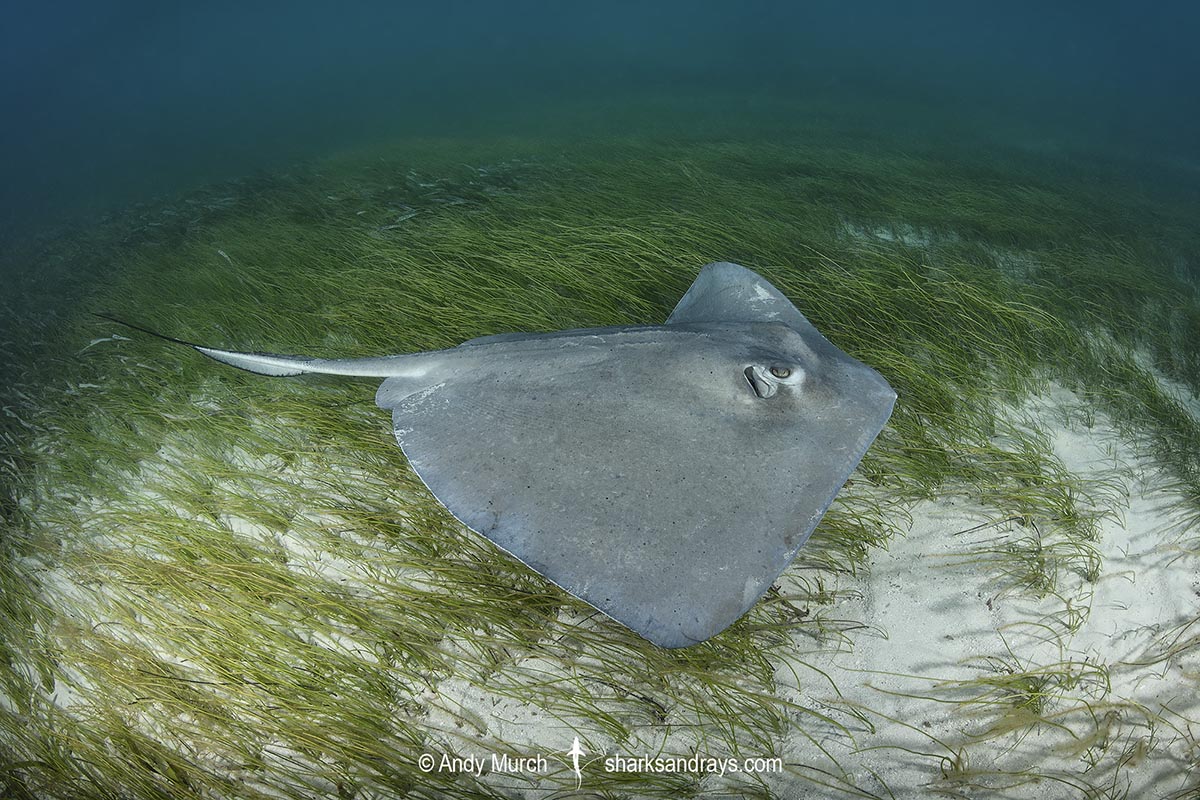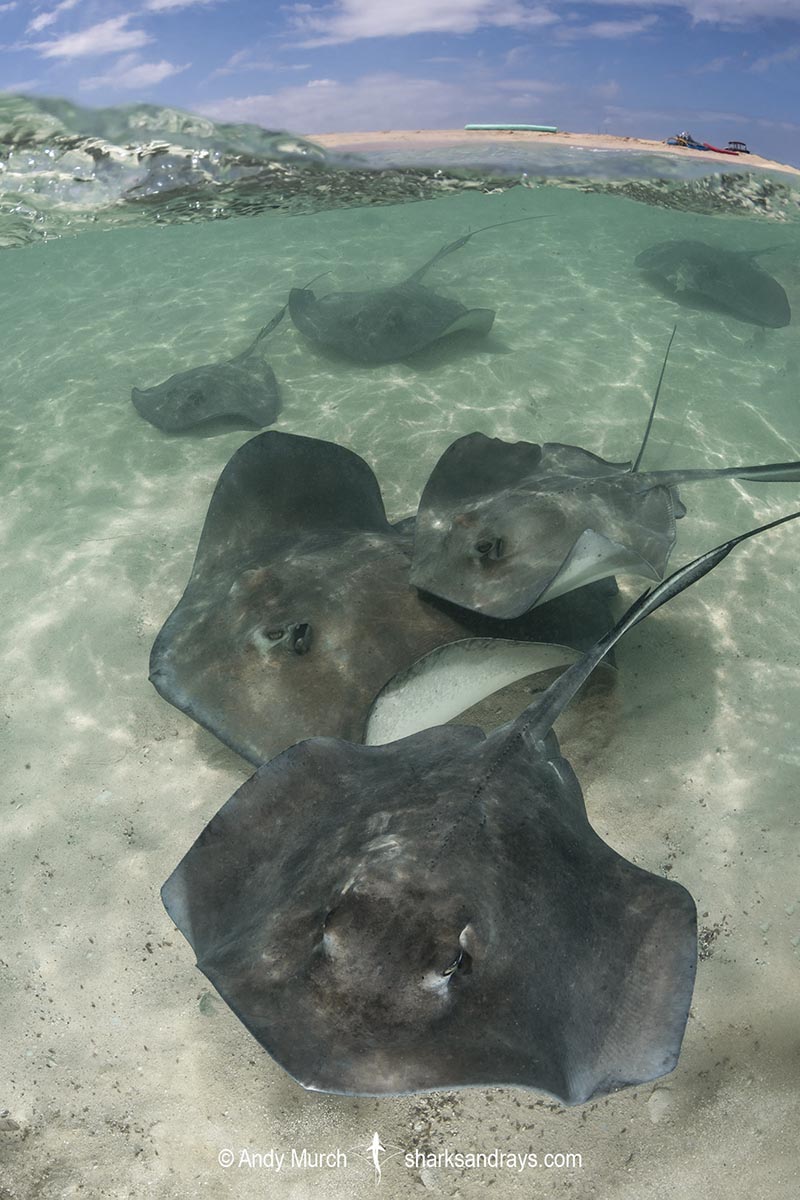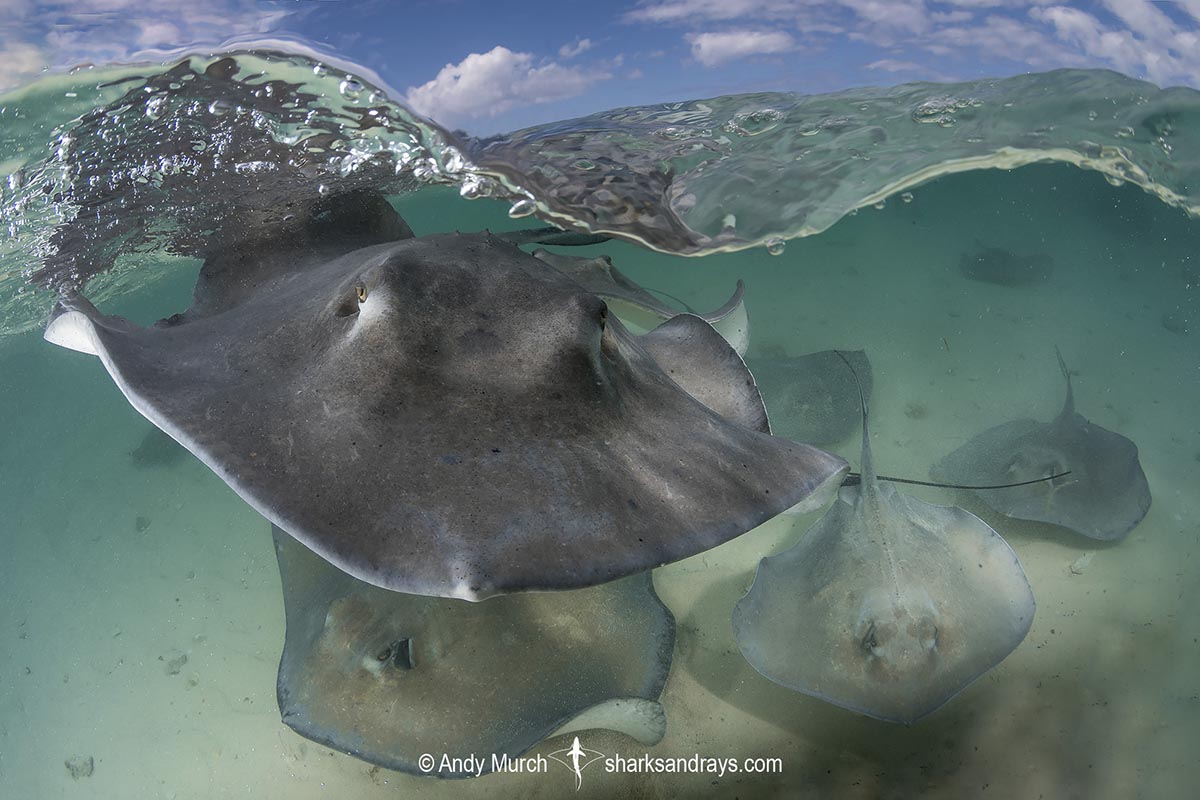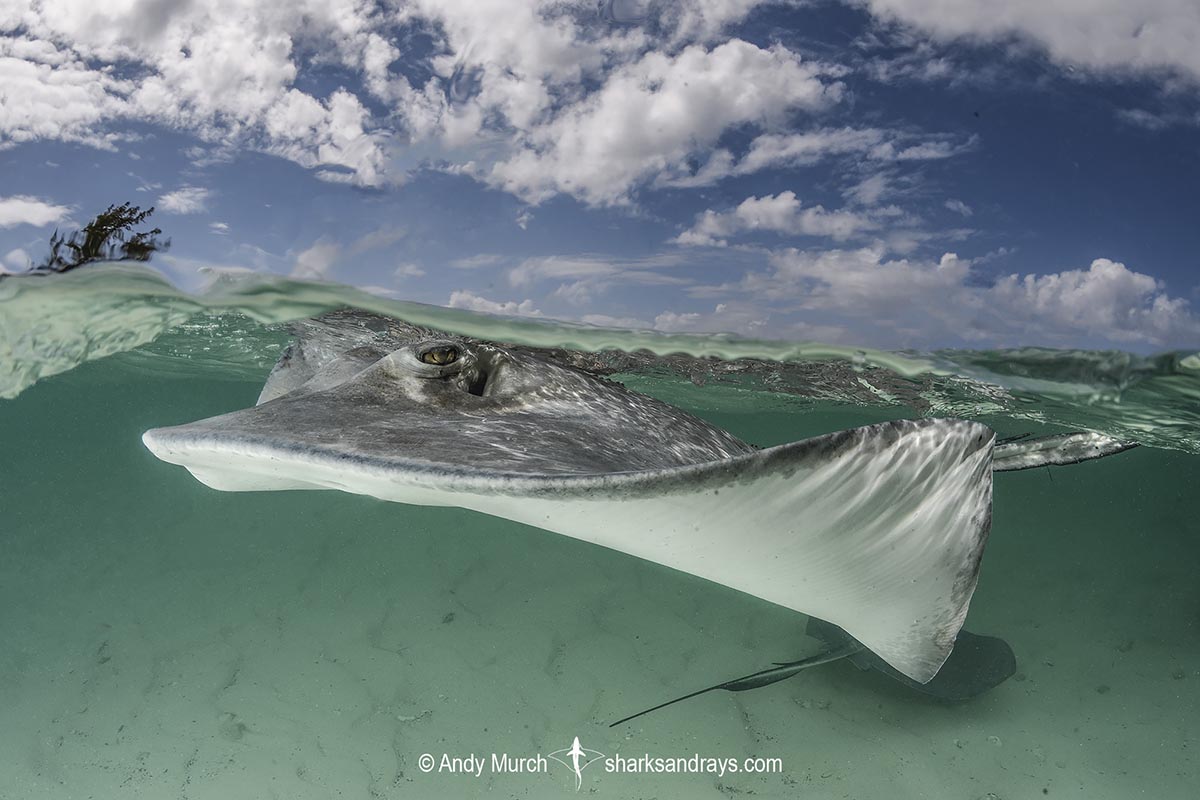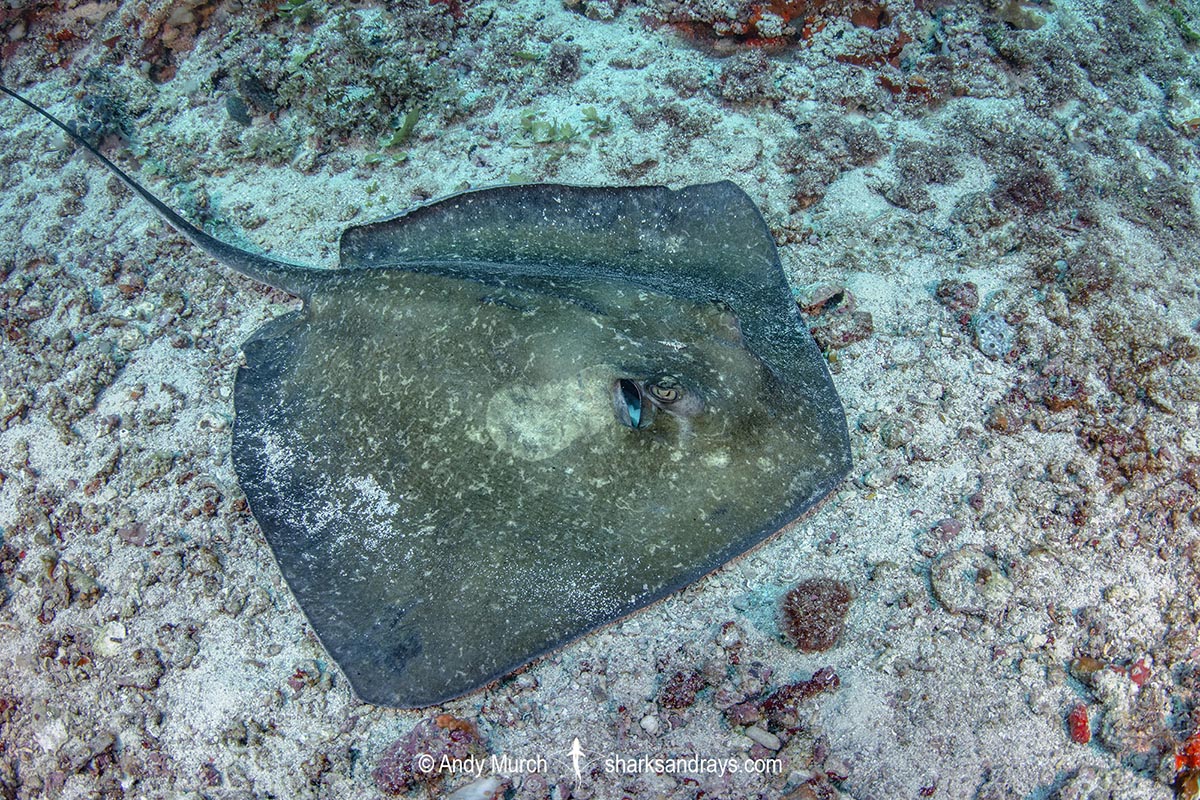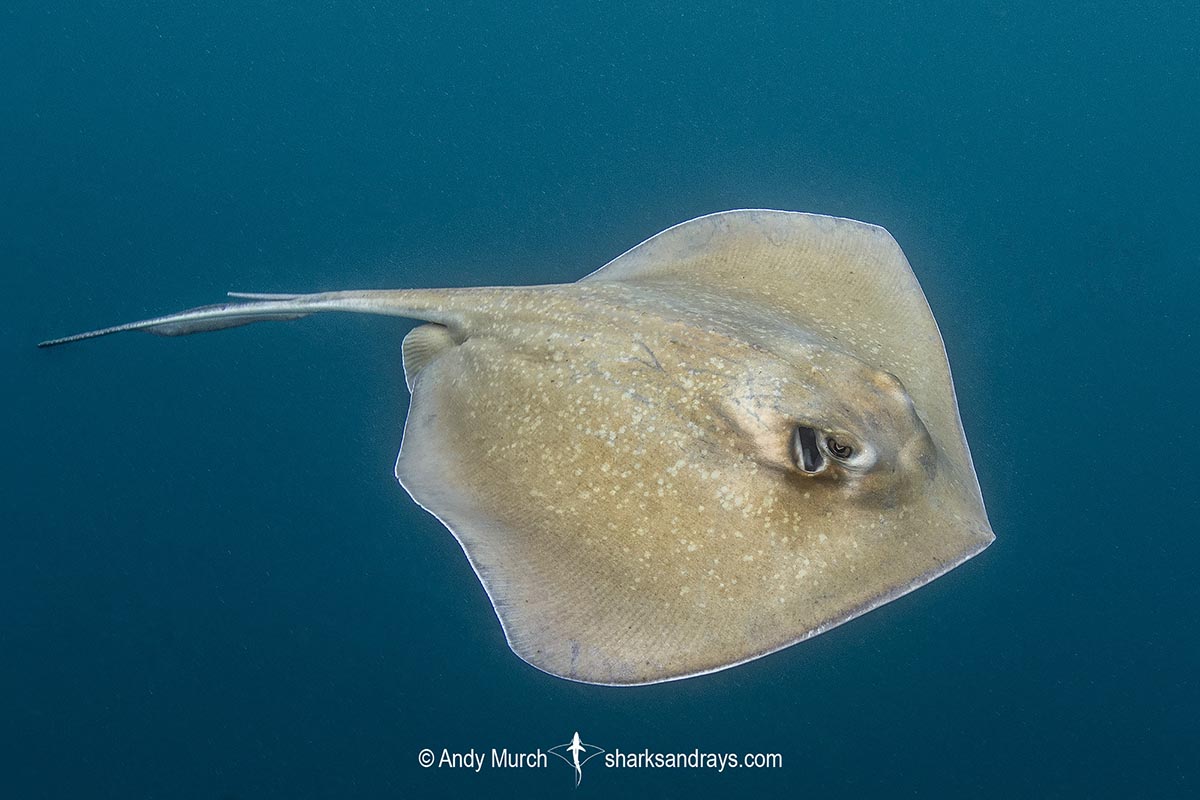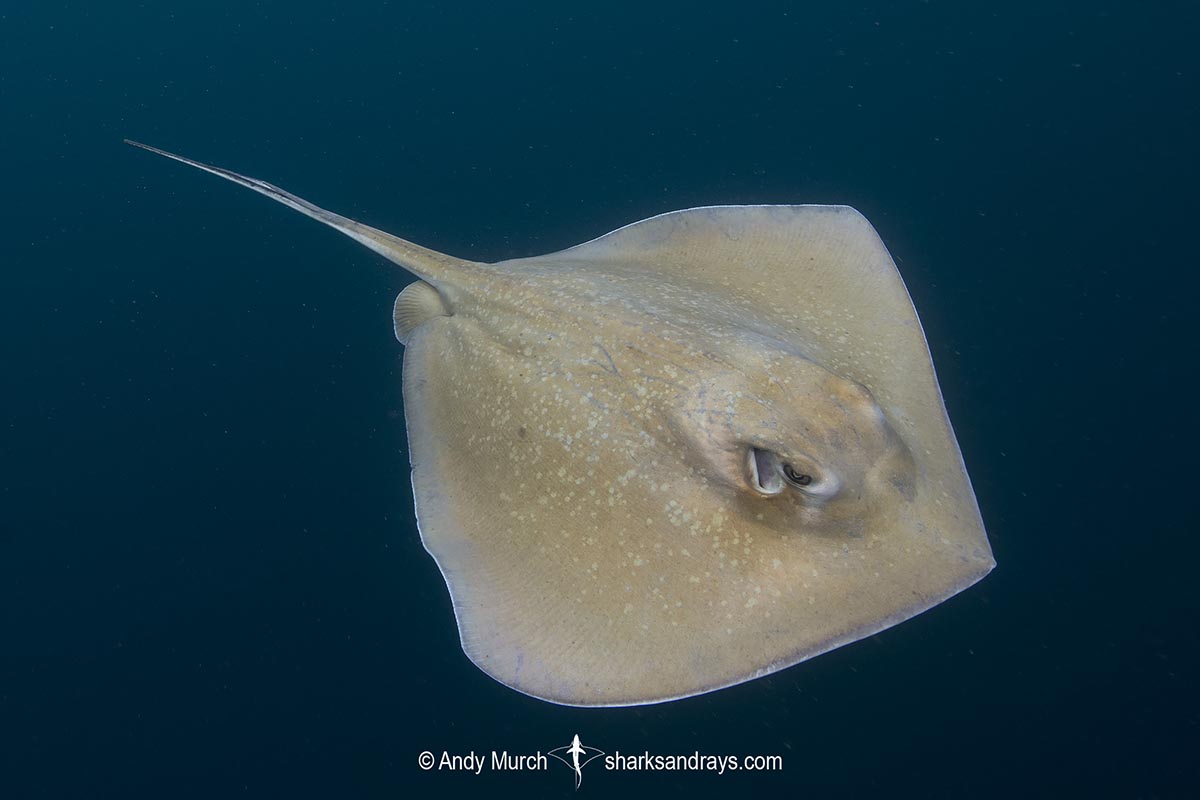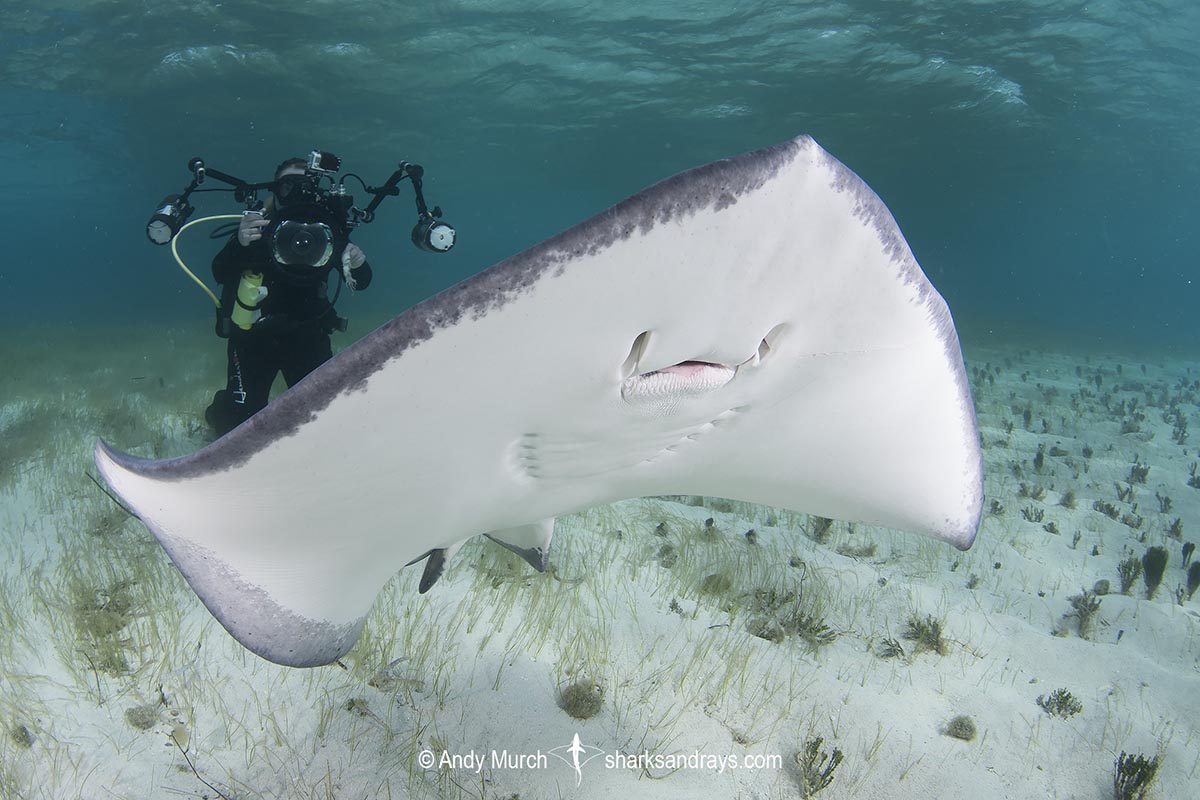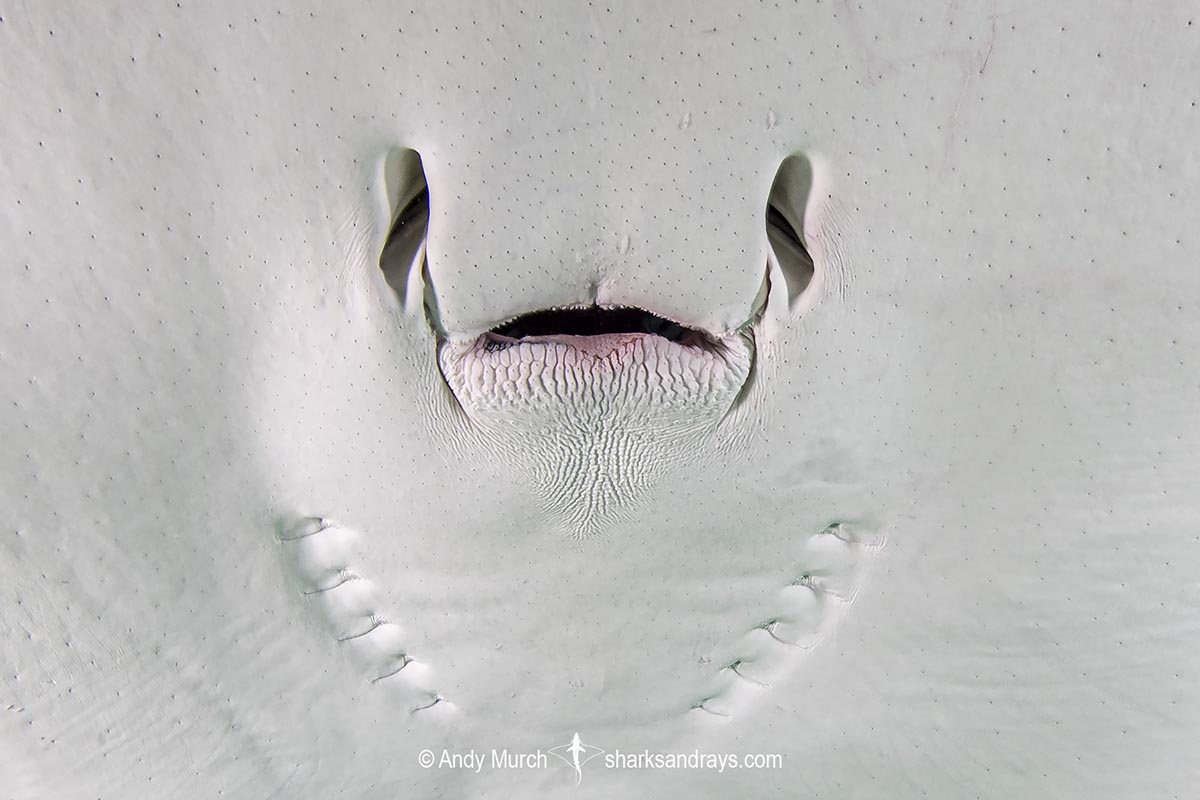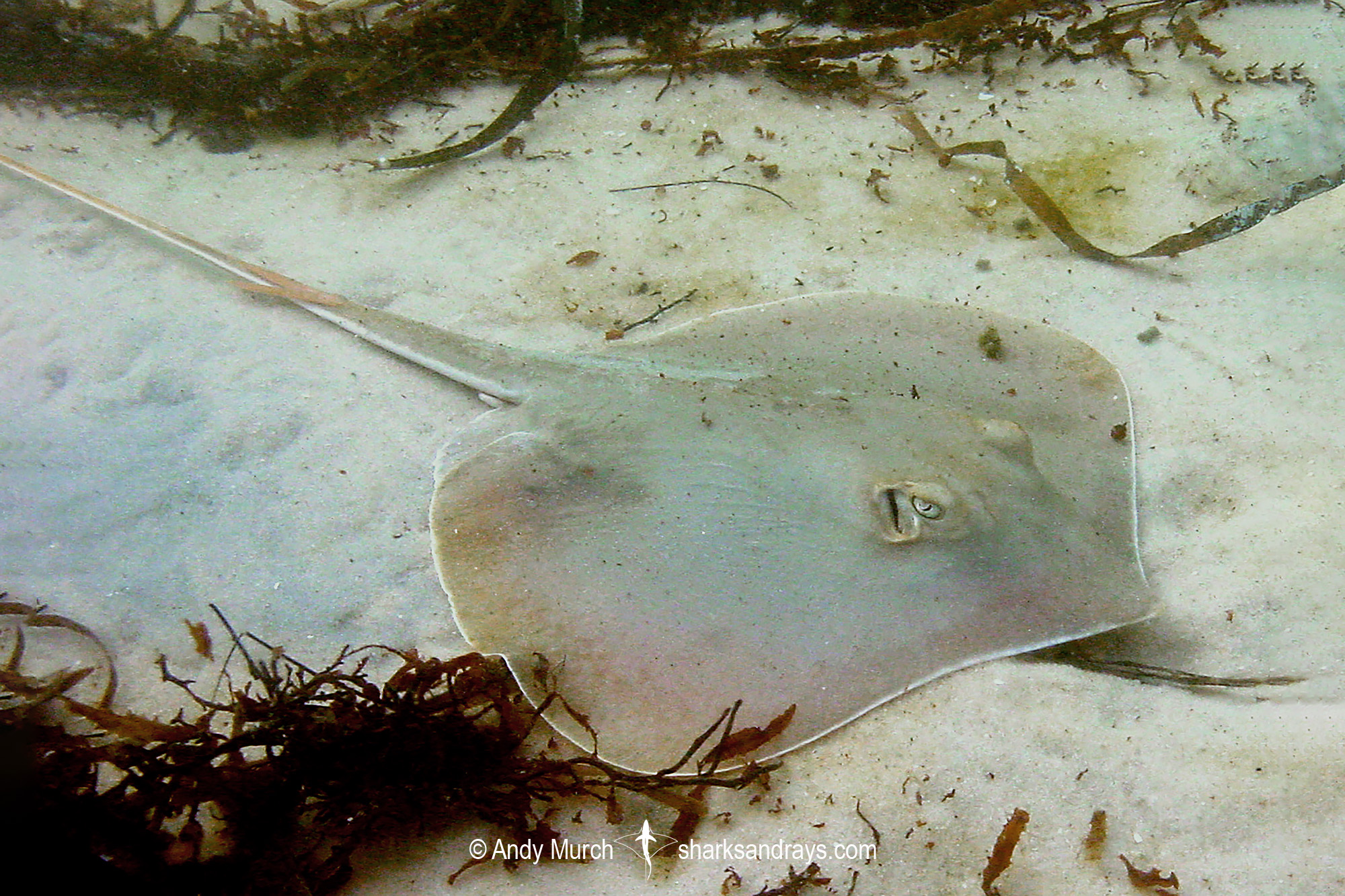Common name(s)
Southern Stingray.
Binomial
Hypanus americanus
Synonyms
Dasyatis americana, Hypanus americana.
Identification
A medium to large stingray with a kite-shaped disc that is slightly wider than long; disc width approximately 1.2 x length. Snout obtusely angular with a slightly protruding tip. Anterior margins of disc mildly convex. Pectoral fin apexes narrowly rounded or angular. Pelvic fins small with tightly rounded apexes.
Eyes relatively large and protruding. Snout length less than 2x combined eye and spiracle length.
Mouth contains 3 oral papillae centrally and often with smaller papillae on each side. Deep labial furrows around mouth. Mouth weakly arched. Lower jaw mildly concave at symphysis. Skirt shaped nasal curtain with a strongly fringed margin.
Patches of dermal denticles present between eyes and along mid-disc. A row of small thornlets extend along midline to base of tail. Short row of thornlets on each shoulder. Tail tapers gently to caudal sting. Tail posterior to caudal sting covered in prickly denticles, filamentous to tip. Tail length (when intact) approximately 2.5 x disc width. Ventral finfold long and low; depth roughly equal to tail height. Dorsal finfold usually very low; often reduced to a ridge. One tail sting usually present.
Colour
Dorsum grey or greyish-brown, often with slightly dusky areas between and below eyes. Ventrum white, usually with a dusky disc margin. Tail beyond caudal sting blackish. Ventral fin fold often pale with a dark lower margin.
Size
Maximum disc width 150cm. Disc width at birth 17-19cm.
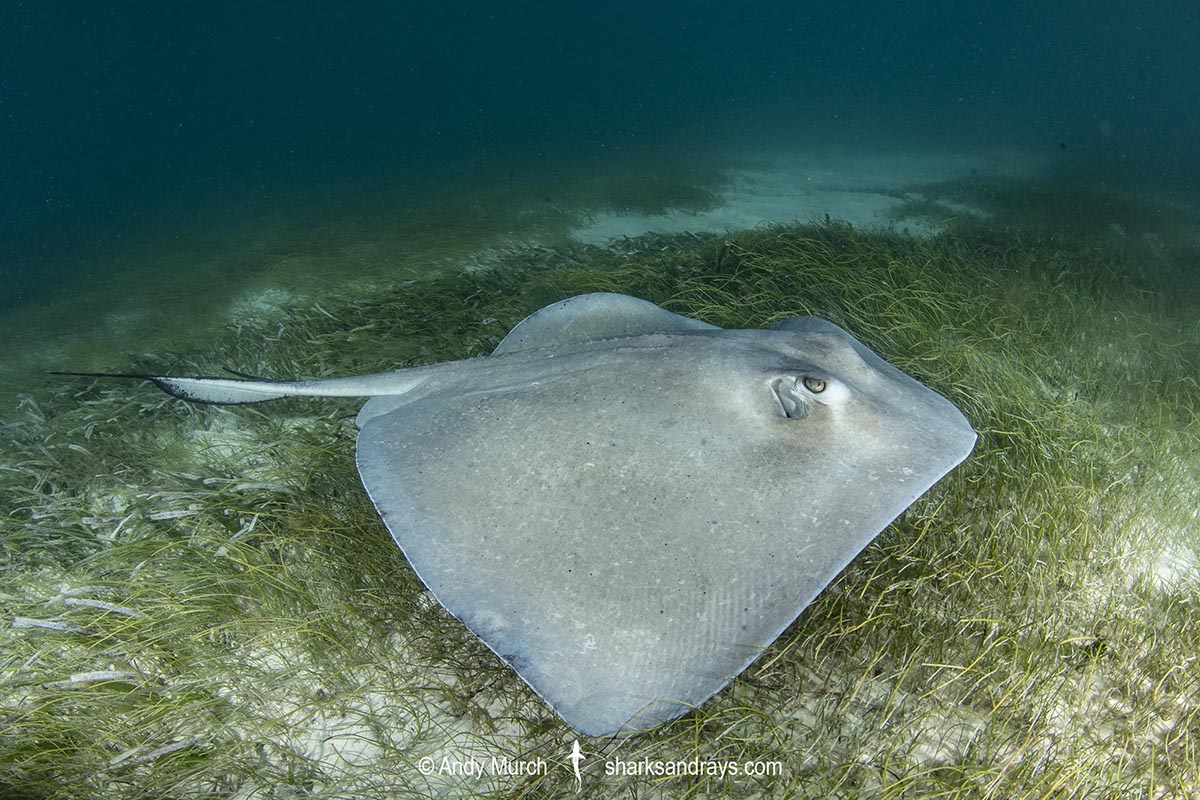
Conservation Status
NEAR THREATENED
The southern stingray (Hypanus americana) is captured as bycatch in artisanal trammel nets, gillnets, beach seines, and longlines, and in commercial trawl and longline fisheries throughout most of its range.
Southern Stingrays are generally discarded in US waters, but they are retained and sometimes directly targeted in Central and South America. In the US and Mexico, Southern Stingray populations are relatively stable, but in Colombia, the it is assessed as Near Threatened due to over-exploitation and habitat degradation. Overall, the species is thought to have declined by 20-29% over the last three decades.
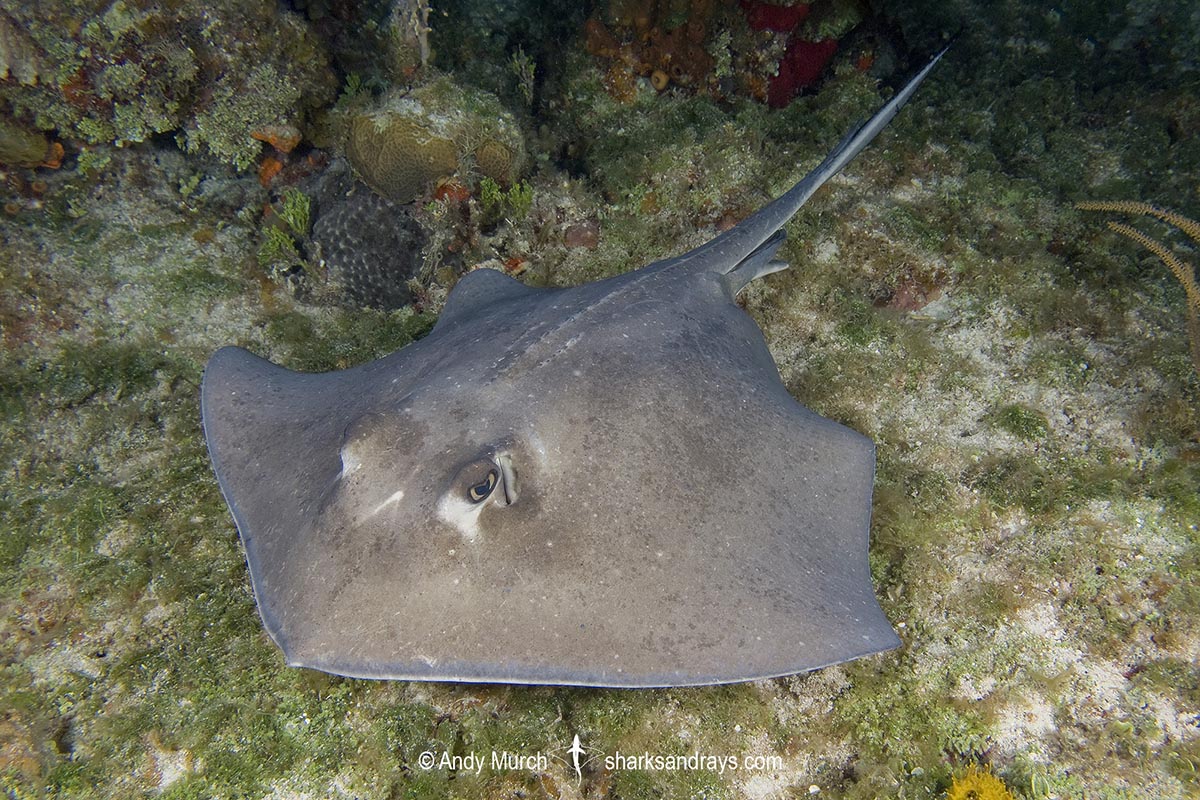
Habitat
Tropical/sub-tropical seas. On sandy substrates, sea grass beds, and areas adjacent to reefs. From shallow estuarine environments to at least 100m.
Distribution
Western Atlantic, Gulf of Mexico, and Caribbean Sea. Range extends from New Jersey in the USA to Amapá in northern Brazil.
Reproduction
Matrotrophic aplacental viviparity. 2-7 pups per litter. Gestation 5-8 months in captivity.
Diet
Diet consists mainly of crustaceans.
Behavior
Spends much of the day resting on the substrate. Excavates large depressions in the sand to capture invertebrates.
Reaction to divers
Shy if unaccustomed to divers, otherwise fairly nonchalant allowing long observations unless approached too closely. Easily habituated, will aggressively seek food carried by divers and snorkellers; nibbling fingers with powerful jaws.
Diving logistics
Southern stingrays are extremely common at numerous dive sites in Florida, The Bahamas, and throughout the Caribbean. Organized feeds or areas where snorkellers bring bait are commonplace.
STINGRAY CITY IN THE CANARY ISLANDS
Arguably the most famous stingray feed in the Americas. Scores of southern stingrays congregate in a shallow bay called North Sound on the north side of Grand Cayman. Each day, about a dozen tourist boats run out to Stingray Sandbar for snorkelers, or Stingray City; a slightly deeper site for divers. The rays at these sites aggressively seek out the food on offer but they rarely attempt to use their barbs, even if accidentally stepped on.
HONEYMOON HARBOUR – BAHAMAS
Located at the north end of Gun Cay near Bimini, this shallow spot attracts day trippers from Bimini and private yachts. The stingrays hand out next to the beach and will approach any snorkelers that enter the water with a snack for them. In slightly deeper water, this is also a very good spot to encounter blacknose sharks.
NUNJACK CAY – BAHAMAS
This spot is apparently very similar to Honeymoon Harbour but is situated near Great Abaco Island.
What’s new
View our full list of updates
Similar species
Lutz’s Stingray Extremely similar. Distinguished by small dark flecks on disc. Easily identifiable by more southerly range which starts south of the Amazon River outflow.
Atlantic Stingray Distinguished by small size and elongated, more acutely pointed snout.
Roughtail Stingray Distinguished by lack of thorns on shoulders and tail densely covered in large thorns.





